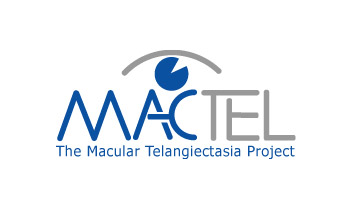Advanced imaging technologies have changed the medical community’s understanding of Macular Telangiectasia type 2. These technologies capture very high-resolution pictures of the retina, in some cases down to the cellular level. Many of the specialized imaging systems used by LMRI-affiliated researchers are not widely available. This includes adaptive optics and optical coherence tomography-angiography (OCT-A). Other imaging technologies, like optical coherence tomography (OCT) and microperimetry, are in use by members of the MacTel clinical community around the world.

En face OCT image of the inner/outer segment junctions of photoreceptors in a MacTel retina. There is a disruption of photoreceptors in the foveal region. Image courtesy of Dr. Roorda.

En face OCT image of the inner/outer segment junctions of photoreceptors in a MacTel retina. There is a disruption of photoreceptors in the foveal region. Image courtesy of Dr. Roorda.
Scientists and clinicians have applied advanced retinal imaging to learn about clinical characteristics of MacTel, the progression of the disease, and the cellular changes that occur in the retina.
Investigators:
Mina Chung
Austin Roorda
Joseph Carroll
Daniel Pauleikhoff
Frank Holz
Jacque Duncan
David Williams





